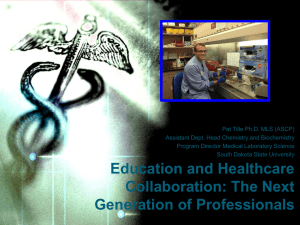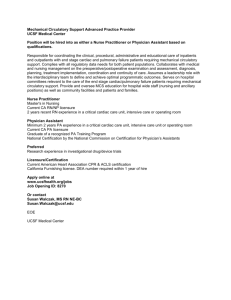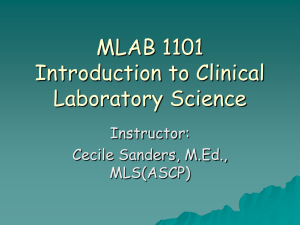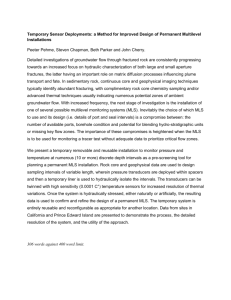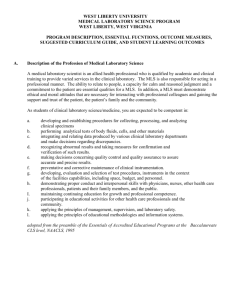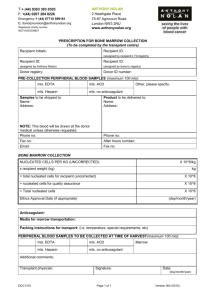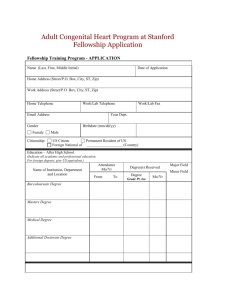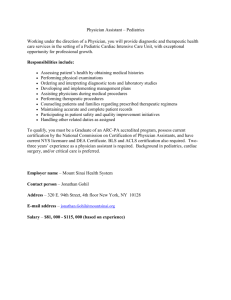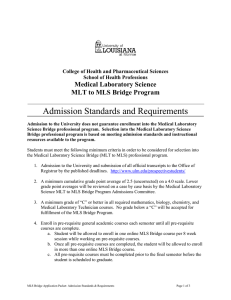Medical laboratory Personnel Act 2013
advertisement
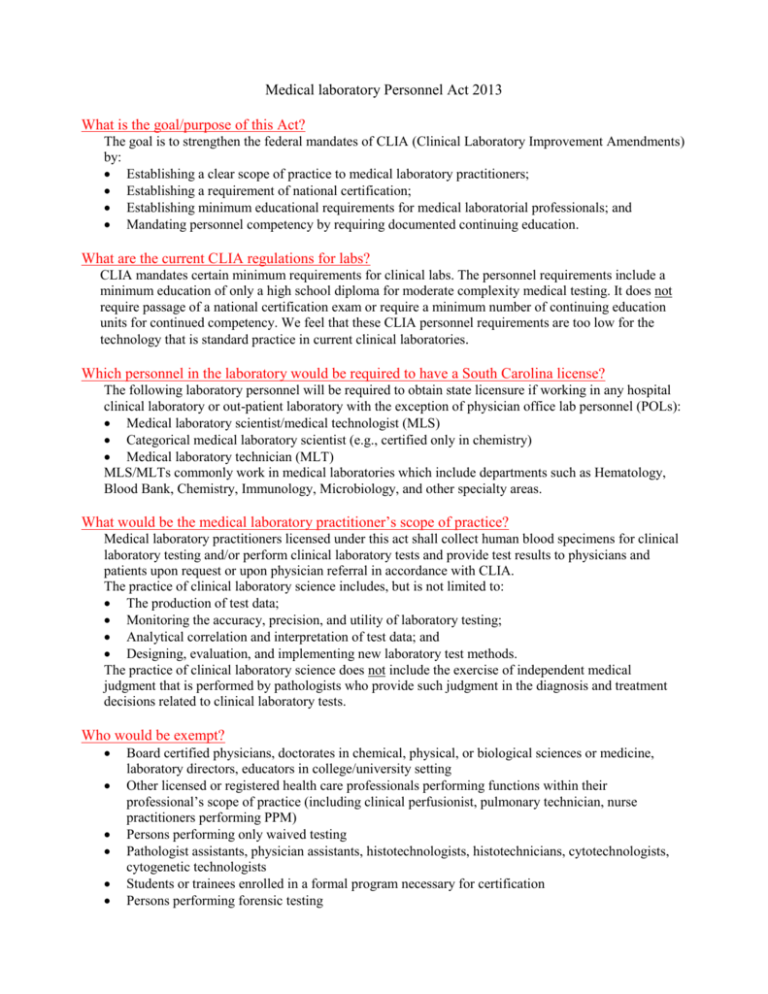
Medical laboratory Personnel Act 2013 What is the goal/purpose of this Act? The goal is to strengthen the federal mandates of CLIA (Clinical Laboratory Improvement Amendments) by: Establishing a clear scope of practice to medical laboratory practitioners; Establishing a requirement of national certification; Establishing minimum educational requirements for medical laboratorial professionals; and Mandating personnel competency by requiring documented continuing education. What are the current CLIA regulations for labs? CLIA mandates certain minimum requirements for clinical labs. The personnel requirements include a minimum education of only a high school diploma for moderate complexity medical testing. It does not require passage of a national certification exam or require a minimum number of continuing education units for continued competency. We feel that these CLIA personnel requirements are too low for the technology that is standard practice in current clinical laboratories. Which personnel in the laboratory would be required to have a South Carolina license? The following laboratory personnel will be required to obtain state licensure if working in any hospital clinical laboratory or out-patient laboratory with the exception of physician office lab personnel (POLs): Medical laboratory scientist/medical technologist (MLS) Categorical medical laboratory scientist (e.g., certified only in chemistry) Medical laboratory technician (MLT) MLS/MLTs commonly work in medical laboratories which include departments such as Hematology, Blood Bank, Chemistry, Immunology, Microbiology, and other specialty areas. What would be the medical laboratory practitioner’s scope of practice? Medical laboratory practitioners licensed under this act shall collect human blood specimens for clinical laboratory testing and/or perform clinical laboratory tests and provide test results to physicians and patients upon request or upon physician referral in accordance with CLIA. The practice of clinical laboratory science includes, but is not limited to: The production of test data; Monitoring the accuracy, precision, and utility of laboratory testing; Analytical correlation and interpretation of test data; and Designing, evaluation, and implementing new laboratory test methods. The practice of clinical laboratory science does not include the exercise of independent medical judgment that is performed by pathologists who provide such judgment in the diagnosis and treatment decisions related to clinical laboratory tests. Who would be exempt? Board certified physicians, doctorates in chemical, physical, or biological sciences or medicine, laboratory directors, educators in college/university setting Other licensed or registered health care professionals performing functions within their professional’s scope of practice (including clinical perfusionist, pulmonary technician, nurse practitioners performing PPM) Persons performing only waived testing Pathologist assistants, physician assistants, histotechnologists, histotechnicians, cytotechnologists, cytogenetic technologists Students or trainees enrolled in a formal program necessary for certification Persons performing forensic testing Persons performing laboratory testing on non-human specimens (animals) Persons employed in a physician office laboratory (POL) What would be the requirements for state licensure? Minimum education requirements (MLS/MT: Bachelor’s degree, MLT: Associates degree) Passage of a national certification exam limited to ASCP, AMT national agencies Minimum continuing education hours required for renewal with requirements mandated by licensee’s certification or ASCP CMP if grandfathered and not previously certified How many other states require medical laboratory licensure? 11 states + Puerto Rico California, Nevada, Montana, North Dakota, Louisiana, Tennessee, Florida, West Virginia, New York, Rhode Island, Puerto Rico, and Alaska. Georgia’s medical facility law mandates that facilities hire only nationally certified personnel to perform clinical laboratory testing. North Carolina has begun its quest for state licensure. Virginia, Minnesota, Texas, and Missouri are among those states that have bills pending. Why haven’t more states passed licensure bills? Most state bills have included the physician office lab (POL) personnel but the AMA has opposed that item and blocked the passage of the bill. We have chosen not to include them as a compromise. How much will this bill cost the state? Who administers the Act? This Act would be self-funding as licensure fees would cover the administrating costs. The LLR would issue the licenses and the governor approved SC Board of Clinical Laboratory Science would administer the Act. Would this bill raise salaries? National surveys on laboratory personnel salaries report that the average salary of licensed states is not significantly higher than the average salary of non-licensed states. Salary differences are more based on area of the country. How would this affect the present laboratory testing work force? Is there a transition period? All working MLS and MLT personnel would be “grandfathered” within a 24-month grace transition period. This would keep the present workforce in place and not disrupt current staffing. Who would be on the Board? The governor would approve a 7 member board to include 2 pathologists, one non-physician laboratory director, 2 medical laboratory scientists, one medical laboratory technician, and one lay member. Board members would be elected by the SC societies of ASCLS and AMT. How many educational programs do we have in our state to supply MLS/MLT staff? 7 MLT programs located in technical colleges throughout the state. (>70 graduates/yr) 3 Hospital-based MLS programs (12+ students/year) In addition, several hospitals participate with Armstrong Atlantic State University online MLS program which produce more MLS graduates. As an added benefit, state licensure could actually promote more public awareness of the career of clinical laboratory science and encourage more good students into the profession.

